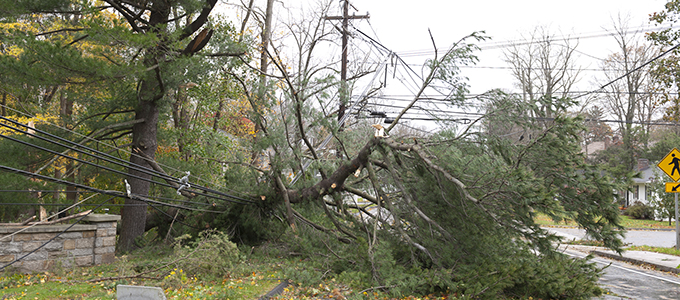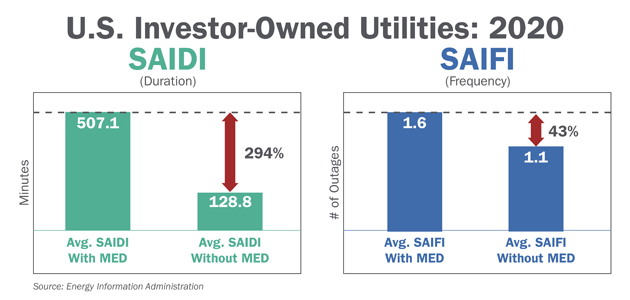The Growing Need to Measure Grid Resilience
Back to Top
In 2020, the U.S. experienced an all-time high of 22 major weather and climate disasters in a single year, resulting in significant economic impacts and perilous conditions for communities often left without access to critical services. According to the National Oceanic and Atmospheric Administration, damages from each of these disasters exceeded $1 billion, totaling approximately $95 billion overall.
With the expected increased frequency of major storms caused by climate change, utilities are under pressure to shift from a recover-and-rebuild mindset to a proactive resiliency strategy, and they are seeking grid-hardening and self-healing investments. However, utilities are faced with the challenge that grid-resilience metrics are not well-established. This makes it difficult for them to quantify the need and value of these investments—or measure their progress.
Despite the industry having robust conversations to try to align on a standard set of metrics, these measurements are nascent or inconsistent. As adverse climate issues are becoming the “new normal,” this generates a growing sense of urgency for utilities to operate with the understanding their system must account for the inevitability of storms, measure what they can, and hope they can make the case for necessary investments.
One starting point is reevaluating the scope of System Average Interruption Duration Index (SAIDI) and System Average Interruption Frequency Index (SAIFI). Utilities are accustomed to leveraging these metrics, but often they exclude major event days (MEDs). MEDs are days the grid experiences stresses beyond what is normally expected, such as during severe weather.
When comparing the 2020 performance of U.S. investor-owned utilities with and without MEDs, there is clearly a major gap in grid performance when utilities account for MEDs, and even utilities are inconsistent with how they define MEDs. Even so, including MEDs gives utilities a more complete view of their system and begins to help them measure severe weather resiliency.

As the industry works to establish resiliency measurements, additional aspects can be evaluated to provide data-backed analyses of grid performance and to consider the broader implications of MEDs:
• Grid Performance: Other ways to quantify system impact are through the percentage of customers who lose power, as well as the speed and cost of restoration.
• Community: With any major storm, there is a human impact when the power goes out. This can translate to the number of hours communities are unable to access critical services and facilities (e.g., hospitals, police stations, water treatment plants).
• Economy: When businesses are unable to operate in the aftermath of storms, it impacts the local economy. This can be measured through the Value of Lost Load from key businesses and the resulting impact on Gross Regional Product.
As resiliency metrics evolve, we must look beyond grid performance and think holistically about the broader impact to all stakeholders. This is especially true for regulators, which approve the resiliency investments utilities must make.
Regulators must take rate cases in context with climate change and the wide-reaching impact of storms, and then facilitate grid advancements in a way that supports utilities as a business. This mindset and collaboration are critical to minimizing the devastation of storms and protecting our communities and economy.